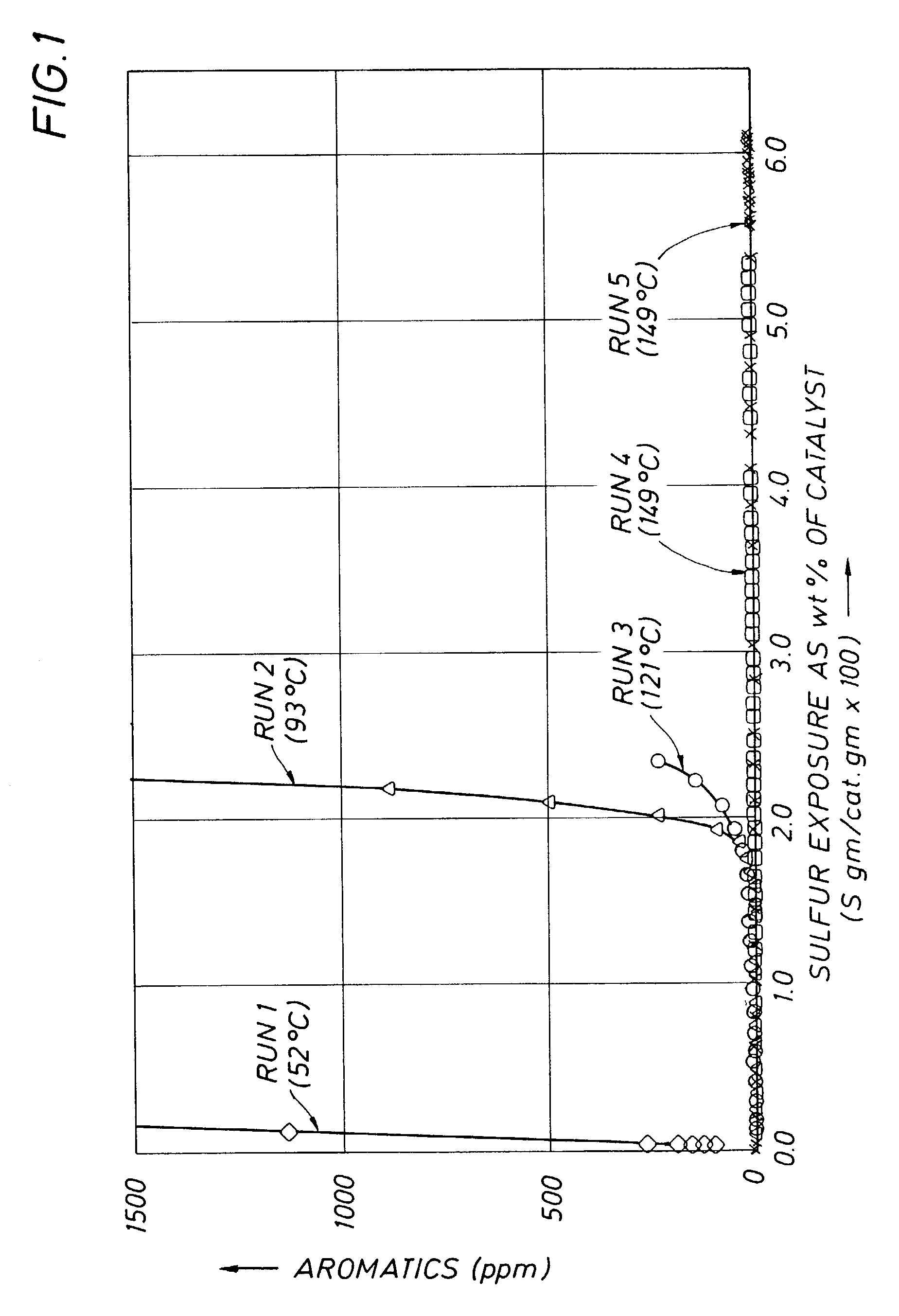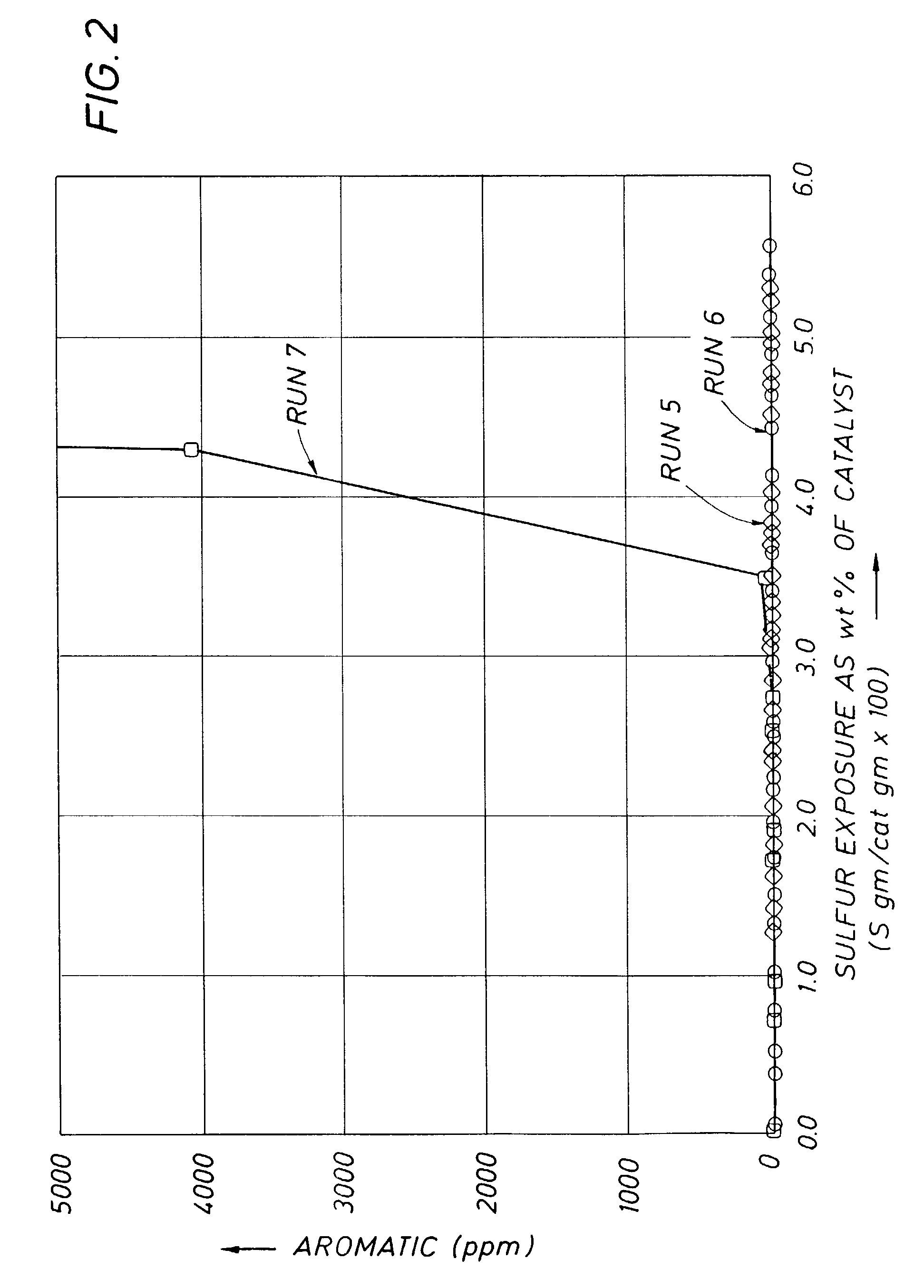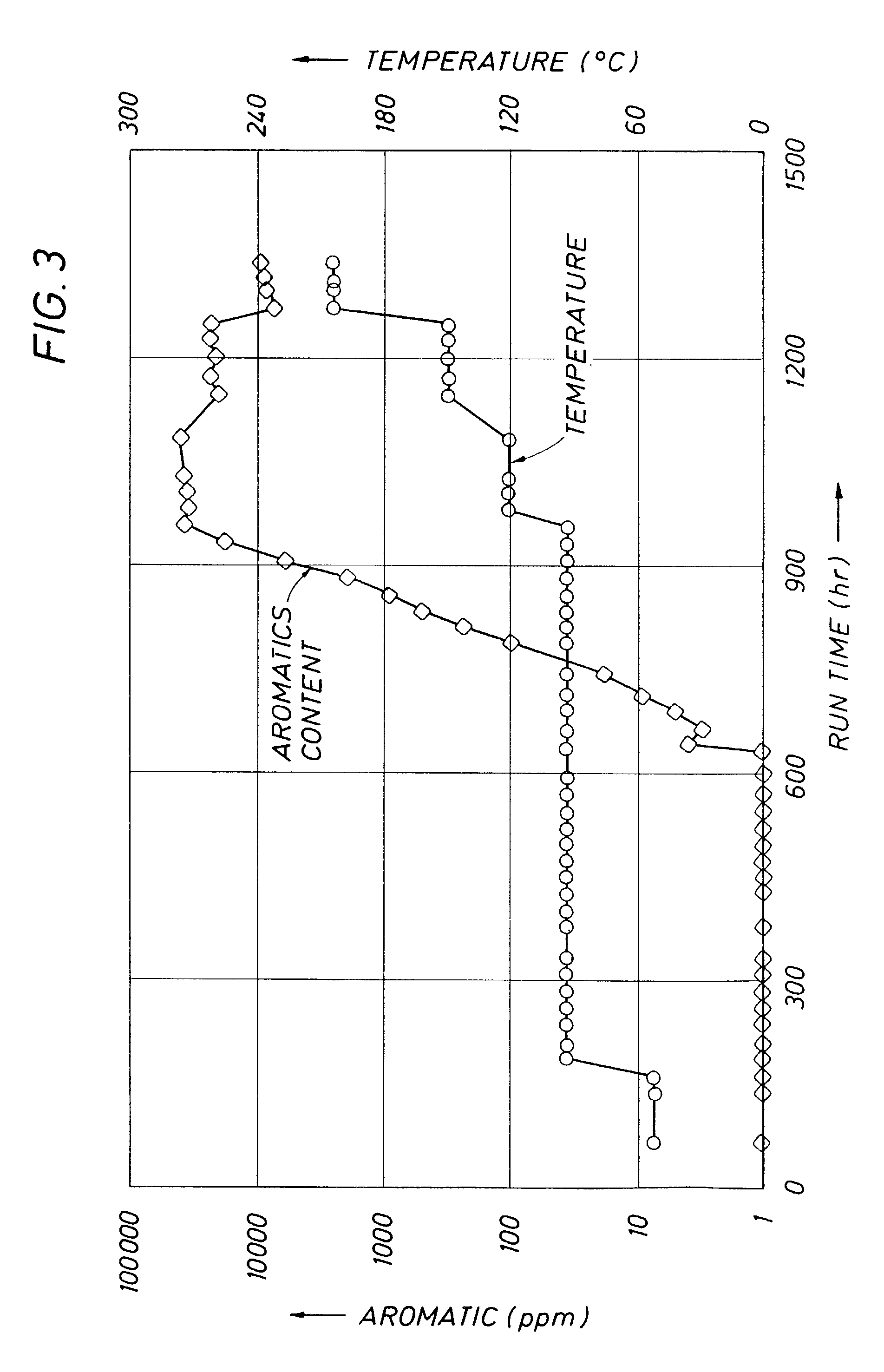Process for hydrogenation of aromatics in hydrocarbon feedstocks containing thiopheneic compounds
- Summary
- Abstract
- Description
- Claims
- Application Information
AI Technical Summary
Benefits of technology
Problems solved by technology
Method used
Image
Examples
example 1
[0024]A set of experiments was conducted to demonstrate the effect of reaction temperature on the poisoning of supported nickel catalysts used for hydrogenation of hydrocarbon feedstocks containing thiopheneic compounds. The catalyst used in these experiments was a commercially available high activity nickel catalyst containing 28 w % nickel on an alumina support having a BET surface area of 120–140 m2 / g. The catalyst was supplied in a pre-reduced and air stabilized form. A 25 cc portion of the catalyst (with a 1:6 dilution with silicon carbide to ensure catalyst particle wetting) was placed in a conventional fixed-bed down-flow reactor. The catalyst was activated in flowing hydrogen at approximately 8 liters / hour by heating the catalyst to 120° C. at 40° C. / hr and holding for two hours, followed by heating to 230° C. at 40° C. / hr and holding for an additional two hours to reduce surface nickel oxide. The catalyst was then cooled to room temperature.
[0025]Five runs were conducted us...
example 2
[0028]To demonstrate that the bulk nickel sulfiding observed with benzothiophene at high temperatures was applicable to other thiopheneic compounds, a further study was conducted using thiophene, as well as benzothiophene at two different concentration levels. This study involved two additional runs (Runs 6 and 7) using the same catalyst, hydrocarbon solvent feedstock and process conditions as in Example 1, except all the runs were conducted at a temperature of 149° C. The only variables between the three runs was the concentration and type of thiopheneic compounds which were as follows: Run 6 approximately 50 ppm thiophene, Run 5 approximately 50 ppm benzothiophene (same as in Example 1, above), and Run 7 approximately 400 ppm benzothiophene. The results of these three runs are shown in FIG. 2.
[0029]The results of Runs 5 and 6 show that thiophene behaves similar to benzothiophene and that bulk sulfiding can be obtained for either, provided the proper reaction temperature is employe...
example 3
[0030]An experiment was conducted to determine if the activity of a catalyst poisoned by sulfur adsorbed on the surface of the catalyst at low or moderate reaction temperatures, could be recovered by raising the reaction temperature to a higher temperature were bulk sulfiding takes place. In this experiment, after the catalyst in Run 2 at 93° C. was surface sulfur poisoned, the reaction temperature was raised in several steps to 200° C. From the results of this experiment shown in FIG. 3, it can be seen that by raising the temperature further deactivation can be stopped, but the activity already lost can be only marginally recovered, in spite of the fact that the upper temperature used (200° C.) was over 50° C. higher than required for bulk sulfur deposition had the proper reaction temperature been used from the start of the run.
[0031]The above examples demonstrate that sulfur poisoning by thiopheneic compounds of supported nickel catalysts used for aromatics hydrogenation can be av...
PUM
 Login to View More
Login to View More Abstract
Description
Claims
Application Information
 Login to View More
Login to View More - R&D
- Intellectual Property
- Life Sciences
- Materials
- Tech Scout
- Unparalleled Data Quality
- Higher Quality Content
- 60% Fewer Hallucinations
Browse by: Latest US Patents, China's latest patents, Technical Efficacy Thesaurus, Application Domain, Technology Topic, Popular Technical Reports.
© 2025 PatSnap. All rights reserved.Legal|Privacy policy|Modern Slavery Act Transparency Statement|Sitemap|About US| Contact US: help@patsnap.com



